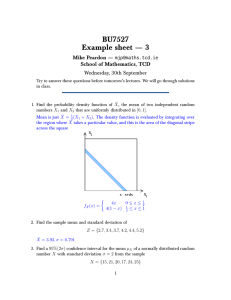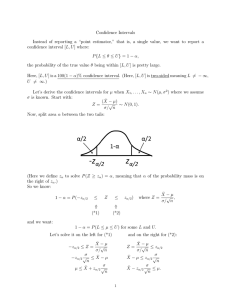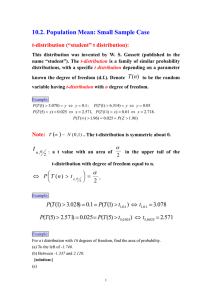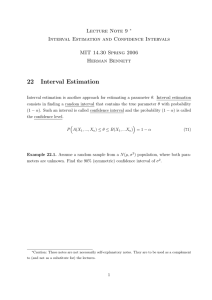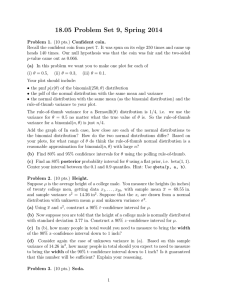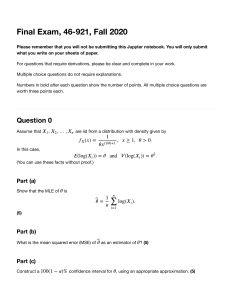Statistics Problems Answer Key - MA 223
advertisement
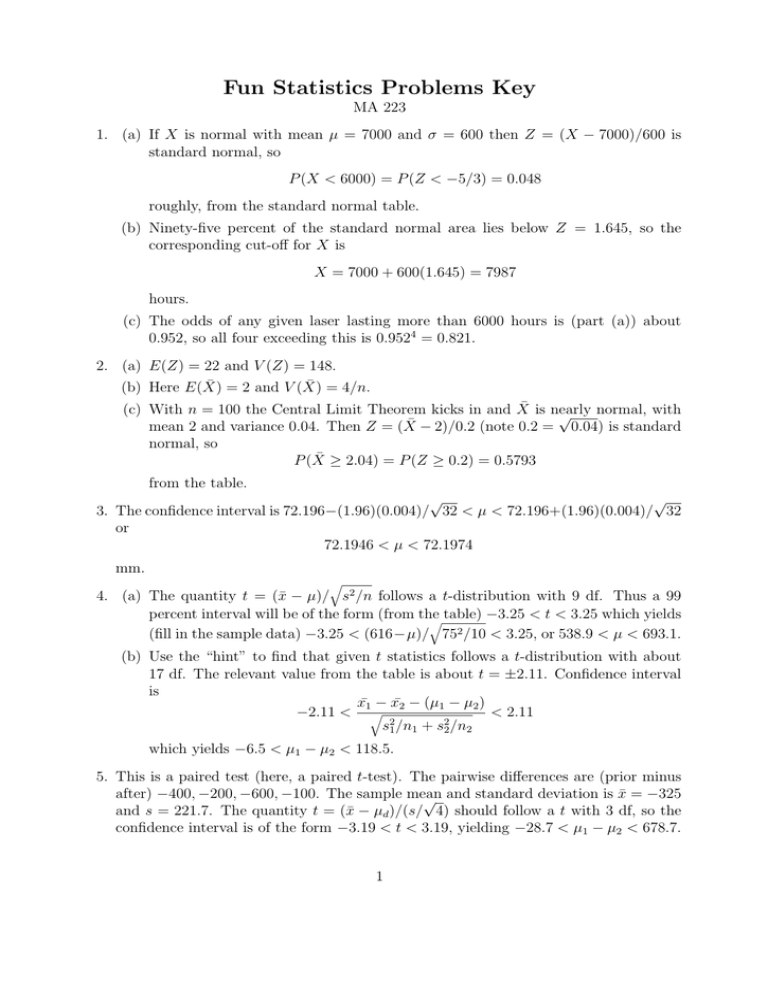
Fun Statistics Problems Key MA 223 1. (a) If X is normal with mean µ = 7000 and σ = 600 then Z = (X − 7000)/600 is standard normal, so P (X < 6000) = P (Z < −5/3) = 0.048 roughly, from the standard normal table. (b) Ninety-five percent of the standard normal area lies below Z = 1.645, so the corresponding cut-off for X is X = 7000 + 600(1.645) = 7987 hours. (c) The odds of any given laser lasting more than 6000 hours is (part (a)) about 0.952, so all four exceeding this is 0.9524 = 0.821. 2. (a) E(Z) = 22 and V (Z) = 148. (b) Here E(X̄) = 2 and V (X̄) = 4/n. (c) With n = 100 the Central Limit Theorem kicks in and X̄ is nearly normal, with √ mean 2 and variance 0.04. Then Z = (X̄ − 2)/0.2 (note 0.2 = 0.04) is standard normal, so P (X̄ ≥ 2.04) = P (Z ≥ 0.2) = 0.5793 from the table. √ √ 3. The confidence interval is 72.196−(1.96)(0.004)/ 32 < µ < 72.196+(1.96)(0.004)/ 32 or 72.1946 < µ < 72.1974 mm. √ 4. (a) The quantity t = (x̄ − µ)/ s2 /n follows a t-distribution with 9 df. Thus a 99 percent interval will be of the form (from the √ table) −3.25 < t < 3.25 which yields (fill in the sample data) −3.25 < (616−µ)/ 752 /10 < 3.25, or 538.9 < µ < 693.1. (b) Use the “hint” to find that given t statistics follows a t-distribution with about 17 df. The relevant value from the table is about t = ±2.11. Confidence interval is x¯1 − x¯2 − (µ1 − µ2 ) −2.11 < √ < 2.11 s21 /n1 + s22 /n2 which yields −6.5 < µ1 − µ2 < 118.5. 5. This is a paired test (here, a paired t-test). The pairwise differences are (prior minus after) −400, −200, −600, −100. The sample mean √ and standard deviation is x̄ = −325 and s = 221.7. The quantity t = (x̄ − µd )/(s/ 4) should follow a t with 3 df, so the confidence interval is of the form −3.19 < t < 3.19, yielding −28.7 < µ1 − µ2 < 678.7. 1

